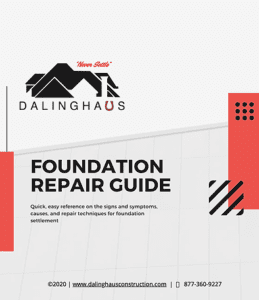Believe it or not, this is a question we get asked quite a bit around some of our communities here in Southern California. And I am happy to say that 99.9% of the time the answer is no, but there is that .1%
Typically when a house is built on a hillside or slope, the foundation is designed to absorb soil movement while keeping the home standing upright and on top of the hill. To do this, the engineers design a pile system that is installed below the active zone of the slope and into competent, native layers below the surface. These pile systems can range from helical piles, to micropiles, and all the way up to large diameter caissons. Which ever way is designed, there is always reasoning for why that particular system was chosen over another. Most of the time it has to do with the type of soils that are present along with the amount of vertical and lateral loading this is going to be exerted on the pile system. The last thing you want to do is underestimate these loads, it could mean going from having a great view of the surrounding area, to being at the bottom of some ravine! Well maybe not quite that drastic, but you get the picture!
Now, there are some telltale signs that you your home or a home is experiencing some sort of slope movement. One of the easiest ways to spot it is to look at any concrete patios or walkways that are closer to the slope than the house. You will notice that there is typically a gap that is created where the house and the concrete meet, if the concrete is not tied into the house’s foundation.
Another thing to look at are trees that reside on the slope. If the trees are growing straight up, then more than likely you don’t have much slope movement. If the trees are leaning or have bows in the trunks, more than likely the slope is experiencing some movement. Believe it or not, trees are always going to grow upwards, not sideways. If a slope moves during the trees lifecycle, the tree will adjust and start growing upwards again. Check out the pictures.
The same can be said for any walls or fences that were installed on the moving slope. The fence and wall companies, typically don’t build them with a slope pre-installed. If you have a leaning fence or a wall in that area of the slope, you will want to get a professional to provide you with some additional feedback and data.
Read more about – Repairing San Clemente Residential Foundation






